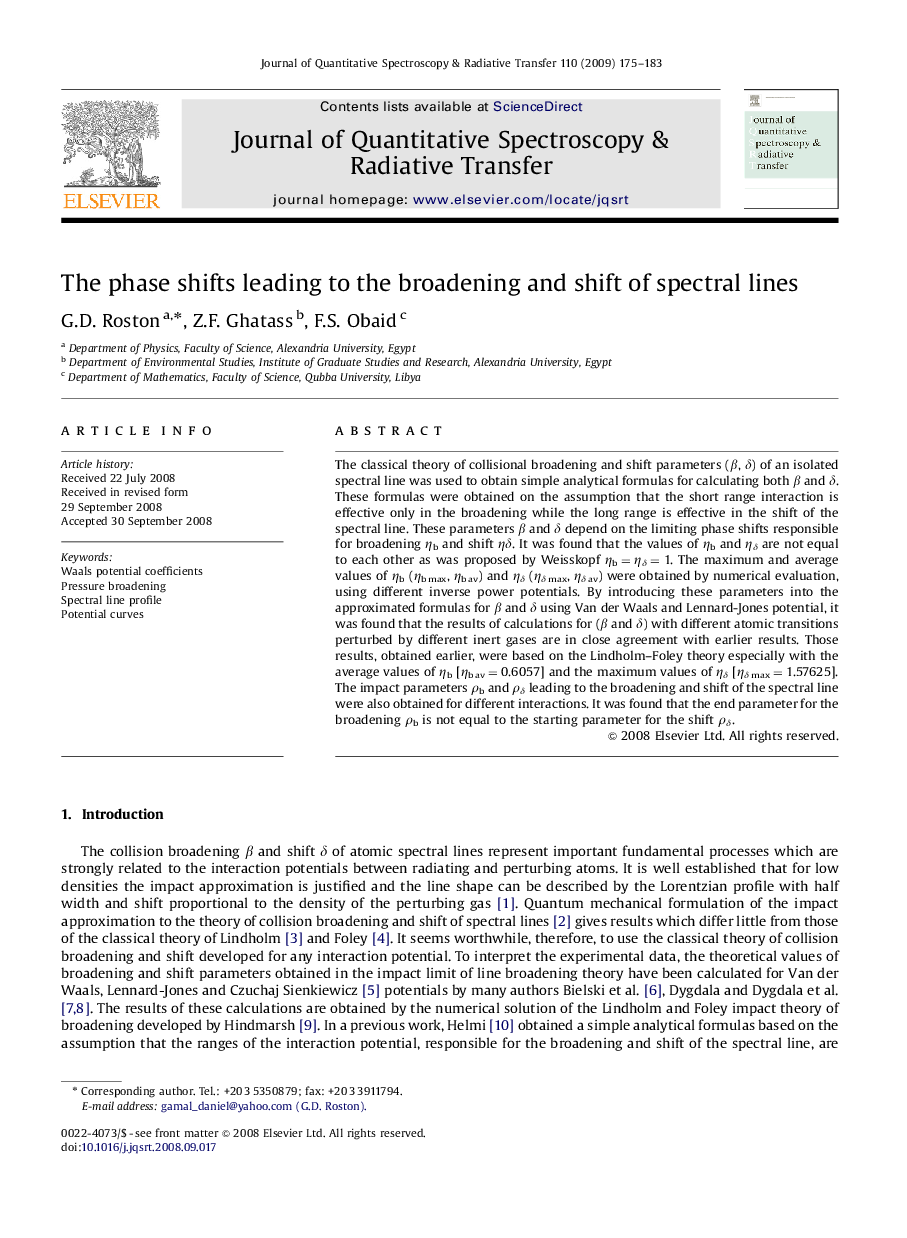| Article ID | Journal | Published Year | Pages | File Type |
|---|---|---|---|---|
| 5430187 | Journal of Quantitative Spectroscopy and Radiative Transfer | 2009 | 9 Pages |
The classical theory of collisional broadening and shift parameters (β, δ) of an isolated spectral line was used to obtain simple analytical formulas for calculating both β and δ. These formulas were obtained on the assumption that the short range interaction is effective only in the broadening while the long range is effective in the shift of the spectral line. These parameters β and δ depend on the limiting phase shifts responsible for broadening ηb and shift ηδ. It was found that the values of ηb and ηδ are not equal to each other as was proposed by Weisskopf ηb=ηδ=1. The maximum and average values of ηb (ηb max, ηb av) and ηδ (ηδ max, ηδ av) were obtained by numerical evaluation, using different inverse power potentials. By introducing these parameters into the approximated formulas for β and δ using Van der Waals and Lennard-Jones potential, it was found that the results of calculations for (β and δ) with different atomic transitions perturbed by different inert gases are in close agreement with earlier results. Those results, obtained earlier, were based on the Lindholm-Foley theory especially with the average values of ηb [ηb av=0.6057] and the maximum values of ηδ [ηδ max=1.57625]. The impact parameters Ïb and Ïδ leading to the broadening and shift of the spectral line were also obtained for different interactions. It was found that the end parameter for the broadening Ïb is not equal to the starting parameter for the shift Ïδ.
